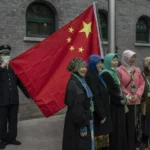Introduction:
India, officially known as the Republic of India, is a country in South Asia. It is the seventh-largest country by land area and the second-most populous country in the world, with over 1.4 billion people. India is a federal parliamentary democratic republic, with New Delhi as its capital and Mumbai as its largest city.
India’s geography is vast and varied, ranging from the snow-capped peaks of the Himalayas in the north to the tropical beaches of the south. The country boasts a rich tapestry of natural landscapes, including deserts, forests, plains, and plateaus. Its extensive river systems, such as the Ganges, Yamuna, and Brahmaputra, are vital to the country’s agriculture and daily life.
The Indian economy is one of the world’s fastest-growing major economies, characterized by a mixed economy with agriculture, manufacturing, and services sectors. India is a significant player in the global IT industry and has a strong presence in pharmaceuticals, textiles, and automobiles. The Indian rupee (INR) is the country’s official currency.
Culturally, India is incredibly diverse, with a multitude of languages, religions, and traditions. The country is home to several major religions, including Hinduism, Islam, Christianity, Sikhism, Buddhism, and Jainism. This cultural diversity is reflected in India’s festivals, cuisine, music, dance, and art. Indian cuisine, known for its use of spices and regional variations, is celebrated worldwide.
India’s history dates back to the Indus Valley Civilization, one of the world’s oldest urban cultures. The country has been a melting pot of various cultures and civilizations, influenced by its historical trade routes and invasions. From the Maurya and Gupta empires to the Mughal dynasty and British colonial rule, India’s history is rich and complex.
Politically, India gained independence from British rule on August 15, 1947. The Indian Constitution, adopted in 1950, established India as a sovereign, socialist, secular, and democratic republic. India has a multi-tiered system of government, with a central government and individual states and union territories.
India’s international standing has grown significantly, with strong diplomatic and economic ties worldwide. It is a founding member of the United Nations and plays a crucial role in international organizations such as the BRICS, G20, and the Commonwealth of Nations.
Tourism is a vital industry in India, attracting millions of visitors each year. The country offers a wealth of attractions, from the iconic Taj Mahal and the palaces of Rajasthan to the backwaters of Kerala and the spiritual city of Varanasi. India’s diverse cities and regions offer unique experiences, making it a popular destination for travelers.
110 Facts About India (2024)
Basic Information
| Number | Category | Details |
|---|---|---|
| 1. | Current Name | India |
| 2. | National Name | भारत गणराज्य (Bharat Ganarajya) |
| 3. | Former Names | Hindustan, Bharat |
| 4. | Date of Establishment | January 26, 1950 (Republic Day) |
| 5. | Date of Independence | August 15, 1947 (from the United Kingdom) |
| 6. | Leadership | President: Droupadi Murmu, Prime Minister: Narendra Modi |
| 7. | Government Type | Federal parliamentary constitutional republic |
Geography
| Number | Category | Details |
|---|---|---|
| 8. | Capital City | New Delhi |
| 9. | Important Cities | Mumbai, Bangalore, Kolkata, Chennai, Hyderabad |
| 10. | Land Area | 3.287 million square kilometers |
| 11. | Total Area | 3.287 million square kilometers |
| 12. | Neighboring Countries (Land) | Pakistan, China, Nepal, Bhutan, Bangladesh, Myanmar |
| 13. | Neighboring Countries (Sea) | Sri Lanka, Maldives |
| 14. | UNESCO World Heritage Sites | Taj Mahal, Qutub Minar, Ajanta Caves (40 sites) |
| 15. | UNESCO World Natural Sites | Kaziranga National Park, Sundarbans (7 sites) |
| 16. | Climate | Tropical, monsoon, alpine, arid |
| 17. | Biodiversity | Home to Bengal tigers, Asian elephants, and over 1,200 bird species |
| 18. | Famous River | Ganges River |
| 19. | Famous Mountain | Kanchenjunga |
| 20. | Coastline Length | 7,516 kilometers |
| 21. | Major Islands | Andaman and Nicobar Islands, Lakshadweep |
| 22. | Longest River | Ganges River |
| 23. | Highest Waterfall | Kunchikal Falls |
| 24. | Largest Lake | Vembanad Lake |
| 25. | Largest Forest | Sundarbans |
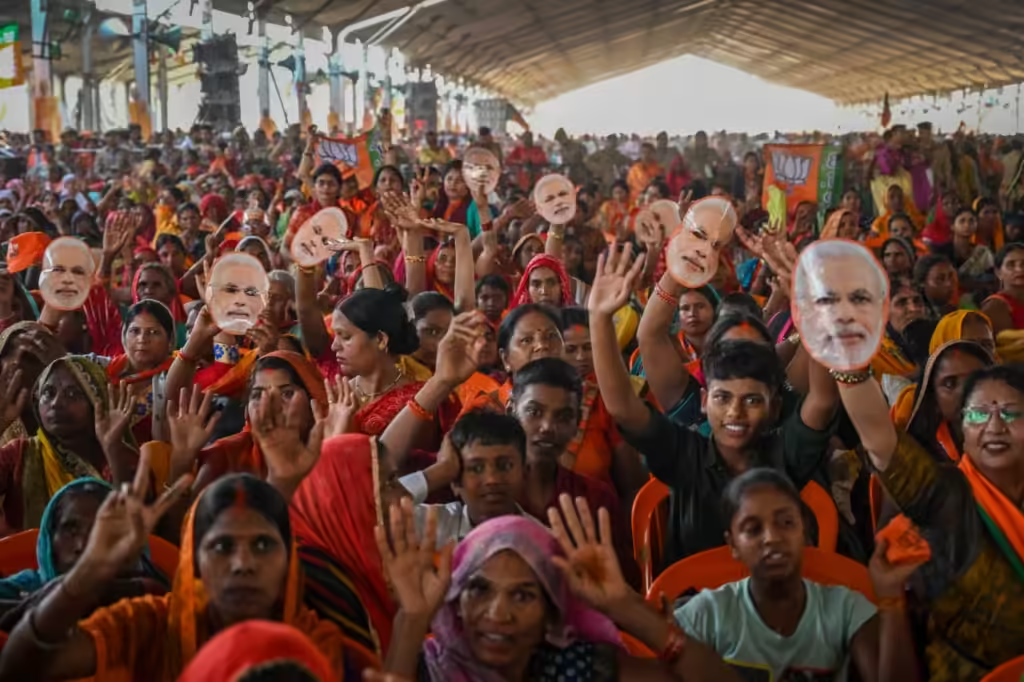
Population
| Number | Category | Details |
|---|---|---|
| 26. | Population (2024) | Approximately 1.4 billion |
| 27. | Population (1950) | 359 million |
| 28. | Population (1900) | 238 million |
| 29. | Projected Population (2070) | 1.7 billion |
| 30. | Population Density | 425 people per square kilometer |
| 31. | Urban Population (%) | 34.9% |
| 32. | Rural Population (%) | 65.1% |
Demographics
| Number | Category | Details |
|---|---|---|
| 33. | Ethnicity/Race | Indo-Aryan (72%), Dravidian (25%), Others (3%) |
| 34. | Languages | Hindi (official), English (associate), Bengali, Telugu, Marathi |
| 35. | National Language | Hindi |
| 36. | Religion | Hinduism (79.8%), Islam (14.2%), Christianity (2.3%), Sikhism (1.7%) |
| 37. | Median Age | 28.4 years |
| 38. | Life Expectancy | 69.7 years |
| 39. | Birth Rate | 19.3 births per 1,000 people |
| 40. | Death Rate | 7.3 deaths per 1,000 people |
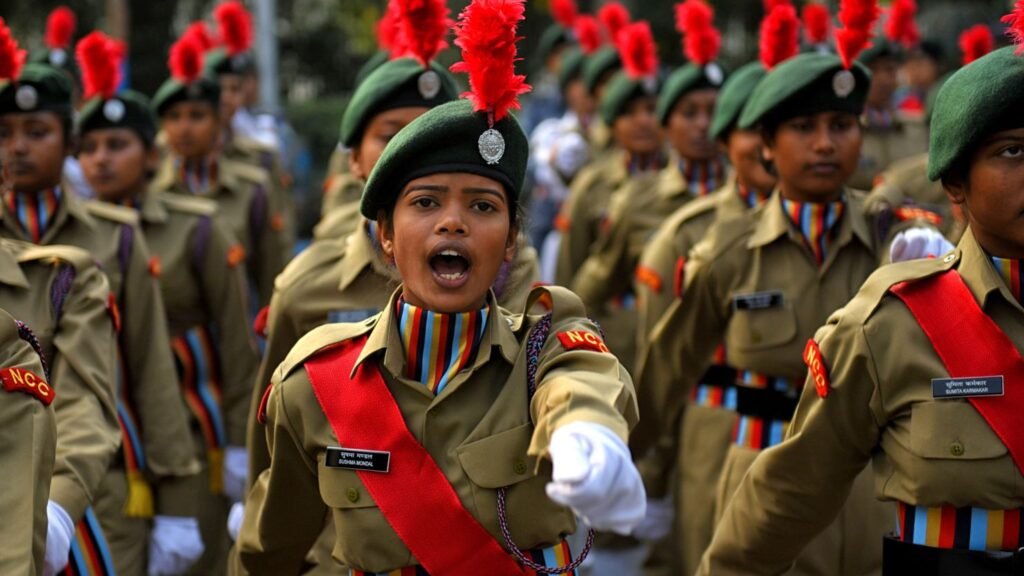
Economic Indicators
| Number | Category | Details |
|---|---|---|
| 41. | Monetary Unit | Indian Rupee (INR) |
| 42. | GDP | $3.1 trillion (2022 est.) |
| 43. | GDP per Capita (PPP) | $7,333 (2022 est.) |
| 44. | Income Level | Lower-middle income |
| 45. | Consumer Price Inflation | 5.2% (2022 est.) |
| 46. | Current Account Balance | -$55.5 billion (2022 est.) |
| 47. | Exchange Rate (Per $) | 1 USD = 74.35 INR |
| 48. | Unemployment Rate | 6.7% (2022 est.) |
| 49. | Stocks Inward ($ billion) | 650 (2022 est.) |
| 50. | Real GDP Growth (%) | 7.5% (2022 est.) |
| 51. | Labor Force (Million) | 520 million |
| 52. | Major Industries | IT services, textiles, chemicals, pharmaceuticals, |
| 53. | Major Exports | Petroleum products, gems and jewelry, pharmaceuticals, textiles |
| 54. | Major Imports | Crude oil, gold, electronics, machinery |
| 55. | Public Debt (% of GDP) | 70% (2022 est.) |
| 56. | Tax Revenue (% of GDP) | 11.2% (2022 est.) |
| 57. | Minimum Wage | Varies by state; average is ₹176 per day |
| 58. | Average Household Income | ₹2.24 lakh per year |
| 59. | Inflation Rate | 5.2% (2022) |
| 60. | Interest Rate | 4.0% (2022) |
| 61. | Major Trade Partners | United States, China, United Arab Emirates, Saudi Arabia |
Social Indicators
| Number | Category | Details |
|---|---|---|
| 62. | Literacy Rate | 77.7% |
| 63. | Fertility Rate | 2.2 children per woman |
| 64. | Infant Mortality Rate | 29.9 per 1,000 live births |
| 65. | Under-5 Mortality Rate | 37.9 per 1,000 live births |
| 66. | National Holidays | Republic Day, Independence Day, Gandhi Jayanti |
| 67. | Health Care System | Public healthcare provided by the state; private options available |
| 68. | Health Expenditure (% of GDP) | 3.8% (2022 est.) |
| 69. | Obesity Rate | 3.9% of adults |
| 70. | Drinking Water Source | 88% of the population has access to clean drinking water |
| 71. | Access to Sanitation | 60% of the population has access to improved sanitation facilities |
| 72. | Average Life Satisfaction | 6.5/10 |
| 73. | Major Health Issues | Heart disease, diabetes, respiratory diseases |
| 74. | Smoking Rate | 11% of adults |
Culture and Society
| Number | Category | Details |
|---|---|---|
| 75. | Famous People | Mahatma Gandhi, Rabindranath Tagore, Sachin Tendulkar, A.R. Rahman |
| 76. | Legal Marriage Age | 18 years for women, 21 years for men |
| 77. | Gender Inequality Index | 0.501 (2021) |
| 78. | National Sport | Field hockey |
| 79. | Sport Achievements | Multiple Olympic medals in field hockey, cricket World Cup wins |
| 80. | National Animal | Bengal tiger |
| 81. | National Fruit | Mango |
| 82. | Famous Landmarks | Taj Mahal, Qutub Minar, India Gate |
| 83. | National Dish | Biryani |
| 84. | Major Newspapers | The Times of India, Hindustan Times, The Hindu |
| 85. | Major TV Channels | Star Plus, Sony TV, Zee TV |
| 86. | Popular Music Genres | Bollywood, classical, folk, pop |
| 87. | National Theatre | National School of Drama |
| 88. | National Gallery | National Gallery of Modern Art, New Delhi |
| 89. | Popular Festivals | Diwali, Holi, Eid, Christmas |
| 90. | Average Internet Speed | 12.9 Mbps |
| 91. | Most Popular TV Show | Kaun Banega Crorepati |
| 92. | Most Popular Book | The Ramayana |
| 93. | Most Popular Sport | Cricket |
| 94. | Most Visited Museum | Indian Museum, Kolkata |
| 95. | Largest Stadium | Narendra Modi Stadium |
| 96. | National Anthem | Jana Gana Mana |
| 97. | Famous Historical Sites | Red Fort, Hampi, Ajanta Caves |
| 98. | Major Brands | Tata, Reliance, Infosys, Mahindra |
| 99. | Famous Foods | Samosa, Dosa, Rogan Josh |
| 100. | Famous Drinks | Masala Chai, Lassi, Toddy |
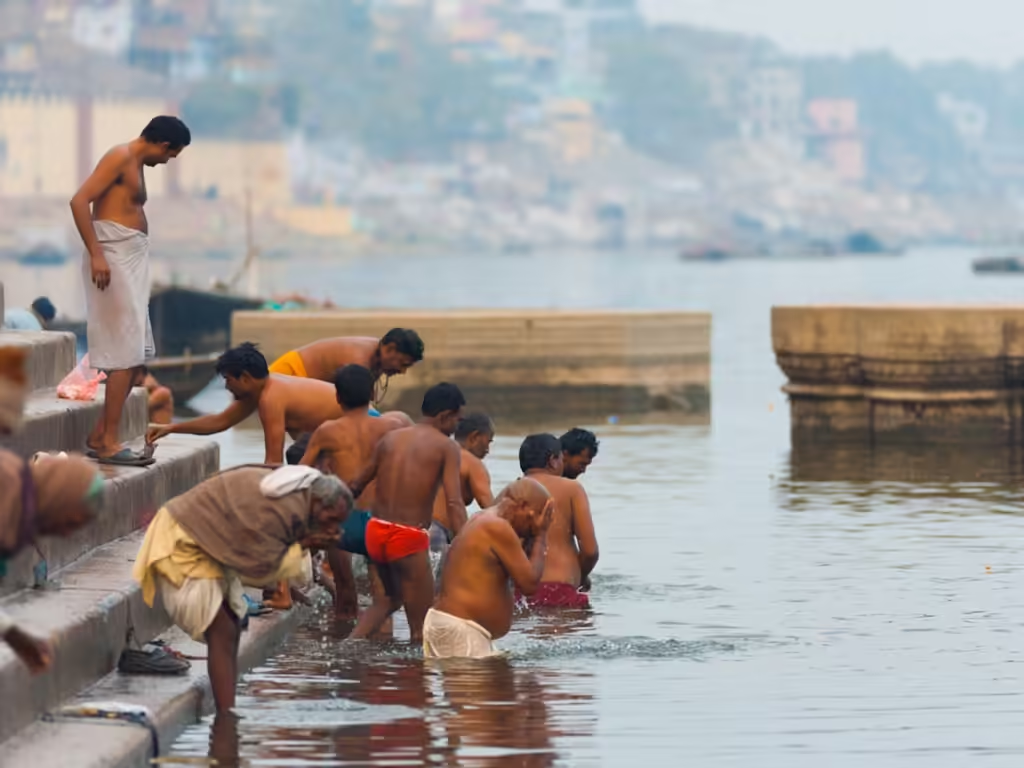
Education
| Number | Category | Details |
|---|---|---|
| 101. | Best Public University | Indian Institute of Science, Bangalore |
| 102. | Best Private University | Ashoka University |
| 103. | Education Rank | 35th globally |
| 104. | School Enrollment Rate | 96.9% for primary education |
| 105. | Average Class Size | 35 students |
| 106. | Notable Alumni | Sundar Pichai, Satya Nadella, Amartya Sen |
| 107. | Public Spending on Education | 4.6% of GDP |
| 108. | Number of Universities | Over 1,000 |
| 109. | Popular Study Abroad Destinations | United States, United Kingdom, Canada |
| 110. | Literacy Programs | Extensive adult literacy programs available |
History
India’s history dates back to the Indus Valley Civilization, one of the world’s earliest urban cultures, which flourished around 2500 BCE. The Vedic period followed, laying the foundations of Hindu culture and religion. The Maurya and Gupta empires marked the golden age of Indian civilization, with significant advancements in science, mathematics, and arts.
The medieval period saw the rise of various regional kingdoms and the establishment of the Mughal Empire in the 16th century, which brought about a flourishing of culture, architecture, and trade. The British East India Company began its influence in the 18th century, leading to full British control by the mid-19th century.
India’s struggle for independence was marked by significant events like the Sepoy Mutiny in 1857 and the non-violent resistance movement led by Mahatma Gandhi in the 20th century. On August 15, 1947, India gained independence from British rule, leading to the creation of a sovereign nation.
Post-independence, India adopted a democratic constitution in 1950, becoming a republic. The following decades were marked by efforts to unify the country, economic challenges, and significant social changes. India embarked on economic liberalization in the 1990s, leading to rapid economic growth and increased global influence.
The Flag of India
The national flag of India, also known as the Tiranga, consists of three horizontal stripes of different colors: saffron at the top, white in the middle, and green at the bottom. In the center of the white stripe is a navy blue Ashoka Chakra with 24 spokes.
- Saffron Color: Represents courage and sacrifice.
- White Color: Symbolizes truth, peace, and purity.
- Green Color: Denotes faith, fertility, and prosperity.
- Ashoka Chakra: Reflects the eternal wheel of law and dharma, indicating movement and progress.
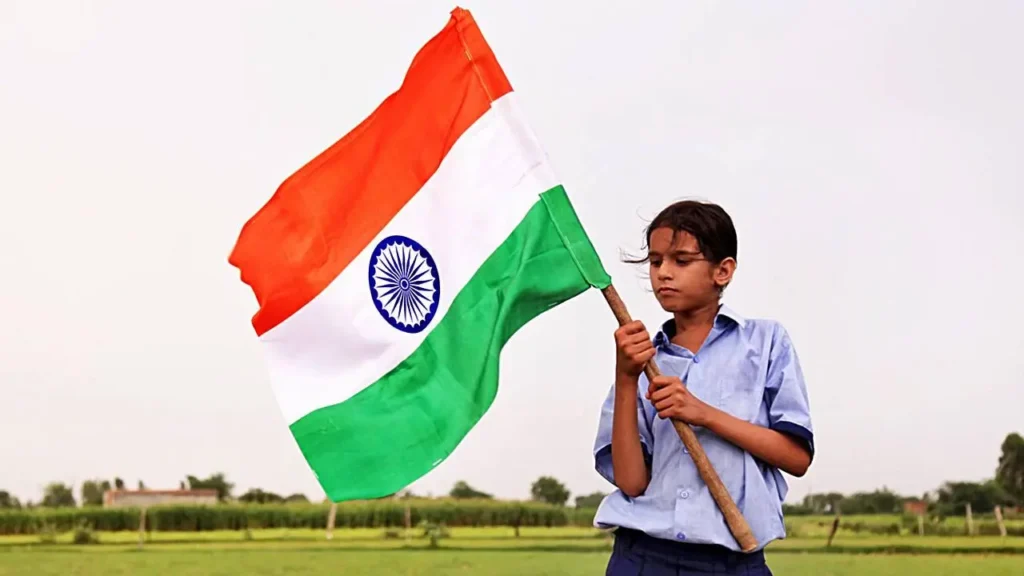
The flag embodies India’s rich cultural heritage, its values, and its aspirations for a peaceful and prosperous future.


